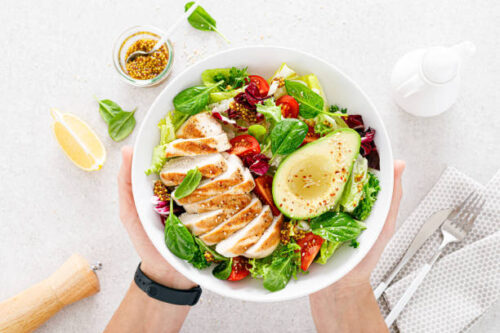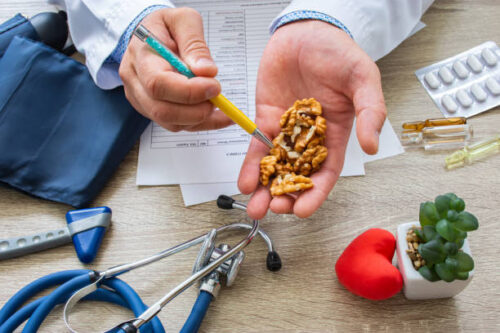According to the Produce For Better Health Foundation’s 2020 State of the Plate report, produce consumption has declined over the past six years, despite nutrition experts saying that you should eat more fruits and veggies. The most notable declines have been seen in adults over 50, who eat the most fruit and vegetables.
It is vital to eat many fruits, vegetables, and other nutritious foods. Numerous of these nutrients have been shown in studies to reduce the likelihood of certain diseases that develop as we age.
Aderet Dana Hoch (RD) is a New York City-based dietitian who blogs Dining with Nature. A diet that includes plenty of fruits, vegetables, and low blood pressure can lower your chance of developing heart disease, stroke, or other serious illnesses. It will also help to maintain a healthy weight.
This is not all. Harvard Health says that the ascorbic acid found in many fruits can aid with iron absorption. This is a problem for many older adults. Research has shown that a higher intake of fruits and veggies is associated with a lower rate of cognitive decline and dementia. Frontiers in Aging Neuroscience published a study that examined nine studies. It found a strong association between regular consumption of fruits and vegetables and better cognitive function in the elderly.
What is the serving size of 1 cup of fruit or vegetable?
You should eat four and a half servings of fruits or vegetables each day. Although it may seem like a lot, the Dietary Guidelines are quite manageable. Hoch suggests that you think about how much produce you can hold in a cup. This is about half a cup or one serving.
Why you may be struggling to eat enough produce?
Despite knowing how important fruits and vegetables are, most Americans still struggle to get enough. It can be more difficult for older adults due to certain factors. These are just a few of the possible reasons.
Price A tight budget might be a problem. You might consider adding frozen or canned options to your shopping list if that is the case. According to Shena Jaramillo (RD), they are similar in nutrition to fresh produce, according to Shena Jaramillo (RD), who is based out of Ellensburg, Washington and runs the blog Nutrition. Avoid products that have too much sodium or sugar.
Access Food deserts where grocery stores aren’t available or food swamps with a lot of fast food can make it difficult to access healthy produce. Jaramillo recommends that you find a way to stockpile now and again, such as by driving with your friends to a larger grocer outside your neighborhood.
Mobility issues Older people may find it difficult to shop for fresh produce if they cannot drive. This is true for everyone with mobility issues. However, there are ways to overcome these challenges, such as grocery delivery services. Most major retailers offer these services, such as Walmart, Instacart and Amazon Fresh.
Changes in age-related health As you get older, your taste buds may become less sharp, and your tolerance for certain foods might decrease, Jaramillo says. Some people may have dental issues that make certain foods more difficult to chew. These are all-natural changes that occur as we age. However, these can make getting the nutrients and foods we need more difficult. It is important to make each bite count.
Reaching Your Healthy Eating Goals for Fruits & Vegetables
These simple tips by Hoch will help you increase your daily intake of fruits and veggies.
- Incorporate fruits and veggies into your favorite dishes. Hoch suggests this. Hoch suggests adding fruit to cereals or yogurts, strawberries and blueberries on pancakes, extra veggies to your pizza, vegetable toppings to your pasta, and greens to your favorite pasta or casserole. You can find many cookbooks that will help you get started.
- Get rid of junk food. Stocking lots of fruits and vegetables is a good idea, but eliminating junk food options will improve it.
- Keep a list of your favorite vegetable recipes. Hoch suggests keeping a list of your favorite recipes on hand to help you create your shopping lists. Choose three to four recipes that you will buy in one week. Apps such as BigOven and Paprika allow you to save and organize recipes, create shopping lists, and find them easily.
- Be open to trying new things. Next grocery trip, look for a new vegetable or fruit. You can even sign up for regular produce delivery from your local CSA. You’ll get a surprise selection of what’s growing through community-supported agriculture.
- Make vegetarian meals at least once a week. You could also participate in Meatless Monday and try a different vegetarian recipe for dinner.







